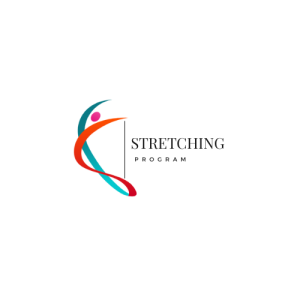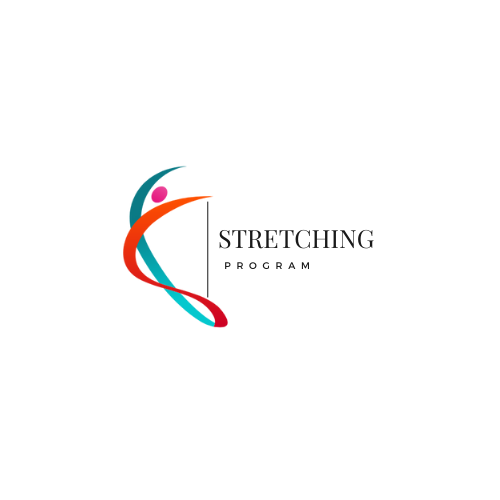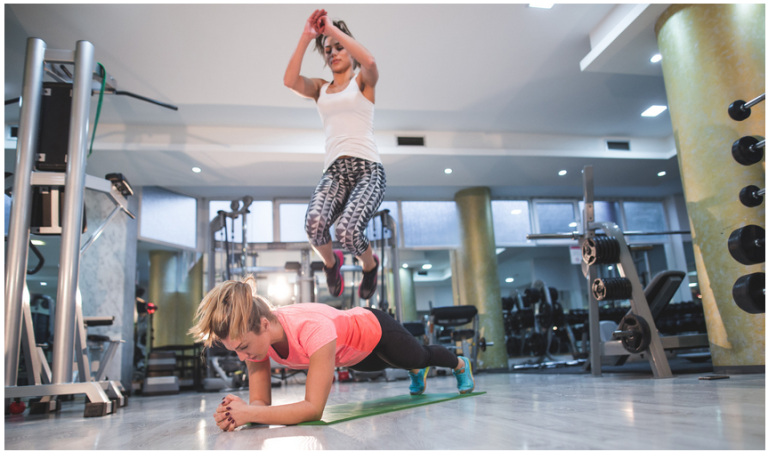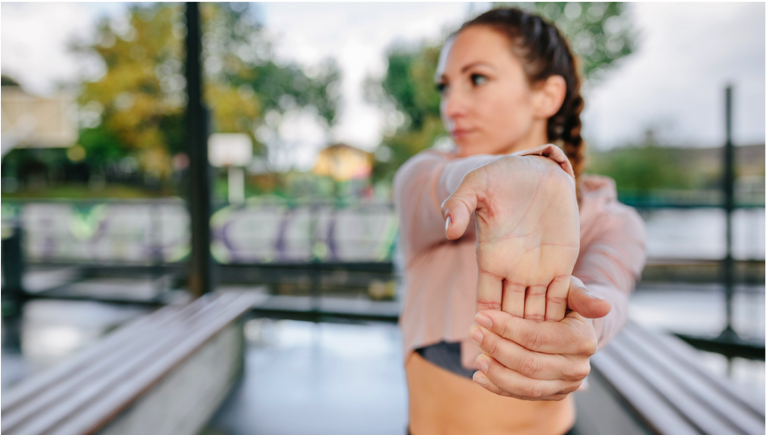
How Does Dynamic Stretching Help an Individual Prepare For an Activity?

Are you ready to take your physical activity to new heights? Dynamic stretching is a game-changer for anyone seeking to optimize their body’s flexibility and prepare for intense workouts or sporting events, helping warm the body. In this comprehensive guide, we’ll explore how dynamic stretching helps an individual prepare for an activity, the science behind dynamic stretching, its benefits, and practical techniques to help you achieve dynamic flexibility like never before.
Dynamic stretching helps individuals prepare for physical activities by actively moving muscles and joints through their full range of motion, which helps prime the body for more intense training. This type of stretching involves controlled movements that increase muscle temperature and decrease stiffness, improving speed, agility, and acceleration.
Dynamic stretching should be incorporated into a warm-up routine before any athletic event to enhance performance and reduce the risk of injury. Some dynamic stretches include torso twists, walking lunges, leg swings, arm circles, hip circles, and upper body twists. It is crucial to perform dynamic stretches, a key form of stretching, correctly and avoid movements that cause pain or strain on the body, thus ensuring optimal flexibility.
Dynamic stretching, in contrast to static stretching, which involves holding a position, is particularly effective for warming up the body before exercise, serving as a pivotal component to enhance physical activity and flexibility.
For a more detailed explanation of the difference between static and dynamic stretching, this guide provides comprehensive insights into how each form of stretching may benefit your workout routine. What is the difference between static and dynamic stretching?
What is Dynamic Stretching, and Why is it Important?

Dynamic stretching is a form of active movement that takes your muscles and joints through their full range of motion. Unlike static stretches, which involve holding a stretch position for an extended period, dynamic stretches involve controlled, smooth movements that mimic your actions during your physical activity. By actively mobilizing your muscles, dynamic stretching prepares your body for the movements and demands of your exercise or sport.
The Science Behind Dynamic Stretching: How It Enhances Performance
Dynamic stretching has been shown to provide numerous benefits for athletes and active individuals. Research has demonstrated that dynamic stretching, a dynamic form of stretching, can increase flexibility, improve range of motion, and enhance athletic performance. By actively moving your muscles and joints, dynamic stretches, a significant form of stretching, increase blood flow, oxygen delivery, and muscle temperature, leading to improved power, agility, and overall physical readiness.
Is Dynamic Stretching Better Than Static Stretching?
While dynamic and static stretching has their place in a well-rounded stretching routine, dynamic stretching is often recommended as a superior choice for pre-workout warm-ups. Static stretches, which involve holding a stretch position for an extended period, can decrease muscle strength and power immediately before intense physical activity. Dynamic stretches, a proactive form of stretching, actively prepare your muscles and joints for the movements you’ll be performing, reducing the risk of injury and optimizing your body for peak performance.
Examples of Dynamic Stretches for Upper and Lower Body
To help you get started, let’s explore some effective dynamic stretches for both the upper and lower body. These exercises can be easily incorporated into your warm-up routine, helping you achieve dynamic flexibility and prepare for your chosen physical activity.
Upper Body Dynamic Stretches:
- Arm Circles
- Arm Swings
- Trunk Rotations, a form of dynamic exercise, help warm and prepare the body for physical activities by enhancing flexibility and reducing the risk of injuries.
- Shoulder Taps
Lower Body Dynamic Stretches:
- Walking Lunges
- Leg Swings
- Squats
- Butt Kicks
How to Incorporate Dynamic Stretching into Your Routine
Integrating dynamic stretching into your exercise routine is a straightforward process. Ideally, you should perform dynamic stretches as part of your warm-up routine, focusing on the muscle groups and movements specific to your chosen activity. Start with 5-10 minutes of light aerobic activity to raise your body temperature, then transition into dynamic stretches, spending 1-2 minutes on each exercise.
Benefits of Dynamic Stretching: Beyond Flexibility
While increased flexibility is a well-known benefit of dynamic stretching, its advantages extend far beyond that. By preparing your body for physical activity, dynamic stretching can help prevent injuries, improve athletic performance, and enhance overall mobility. Additionally, dynamic stretches can improve coordination, balance, and proprioception (the body’s ability to sense its position and movement).
Dynamic Stretching for Injury Prevention and Recovery
Dynamic stretching can play a crucial role in injury prevention and recovery, serving as an essential part of a guide to stretching that enhances physical activity and flexibility. By actively mobilizing your muscles and joints, dynamic stretches can help identify and address areas of tightness or restriction, reducing the risk of overuse injuries. Furthermore, incorporating dynamic stretches into your cool-down routine can aid recovery, facilitating muscle repair and reducing soreness.
Tailoring Dynamic Stretching to Your Specific Needs
While dynamic stretching offers universal benefits, tailoring your routine to your specific needs and goals is essential. Age, fitness level, and any existing injuries or limitations should be considered when selecting and performing dynamic stretches. If you need clarification on exercises that suit you, consider consulting with a certified personal trainer or physical therapist for personalized guidance.
Dynamic Stretching for Different Sports and Activities
Different sports and activities place unique demands on the body, and your dynamic stretching routine, an adaptable form of stretching, should reflect those demands to help warm and prepare the body for these activities. For example, dynamic stretches for runners may focus on hip mobility and leg swings, while stretches for basketball players may emphasize lateral movements and agility drills. You can optimize your body’s preparation and enhance your performance by tailoring your dynamic stretching routine to your specific sport or activity.
Combining Dynamic Stretching with Other Training Modalities
Dynamic stretching, not a standalone solution but rather a valuable component of a comprehensive training program, integrates various forms of stretching to prepare the body. To achieve optimal results, consider combining dynamic stretching with other training modalities, such as strength training, cardiovascular exercise, and static stretching. A well-rounded approach that addresses all aspects of physical fitness, including various forms of stretching, will help you reach your full potential and minimize the risk of injury.
Conclusion
Remember, the key takeaways about dynamic stretching are:
- Dynamic stretches, a pivotal form of stretching, actively move your muscles and joints through their full range of motion, preparing your body for physical activity.
- Incorporating dynamic stretching into your warm-up routine can increase flexibility, improve performance, and reduce the risk of injury.
- Dynamic stretches, as a guide to stretching, should be tailored to your specific needs, considering your sport or activity, fitness level, and any existing limitations to enhance physical activity and flexibility.
- Combining dynamic stretching with other training modalities, such as strength training and cardiovascular exercise, can optimize your overall fitness and performance.
Unleash your full potential and experience the power of dynamic stretching today. By prioritizing dynamic flexibility, you’ll be well on your way to achieving your fitness goals and reaching new heights in your physical pursuits.



